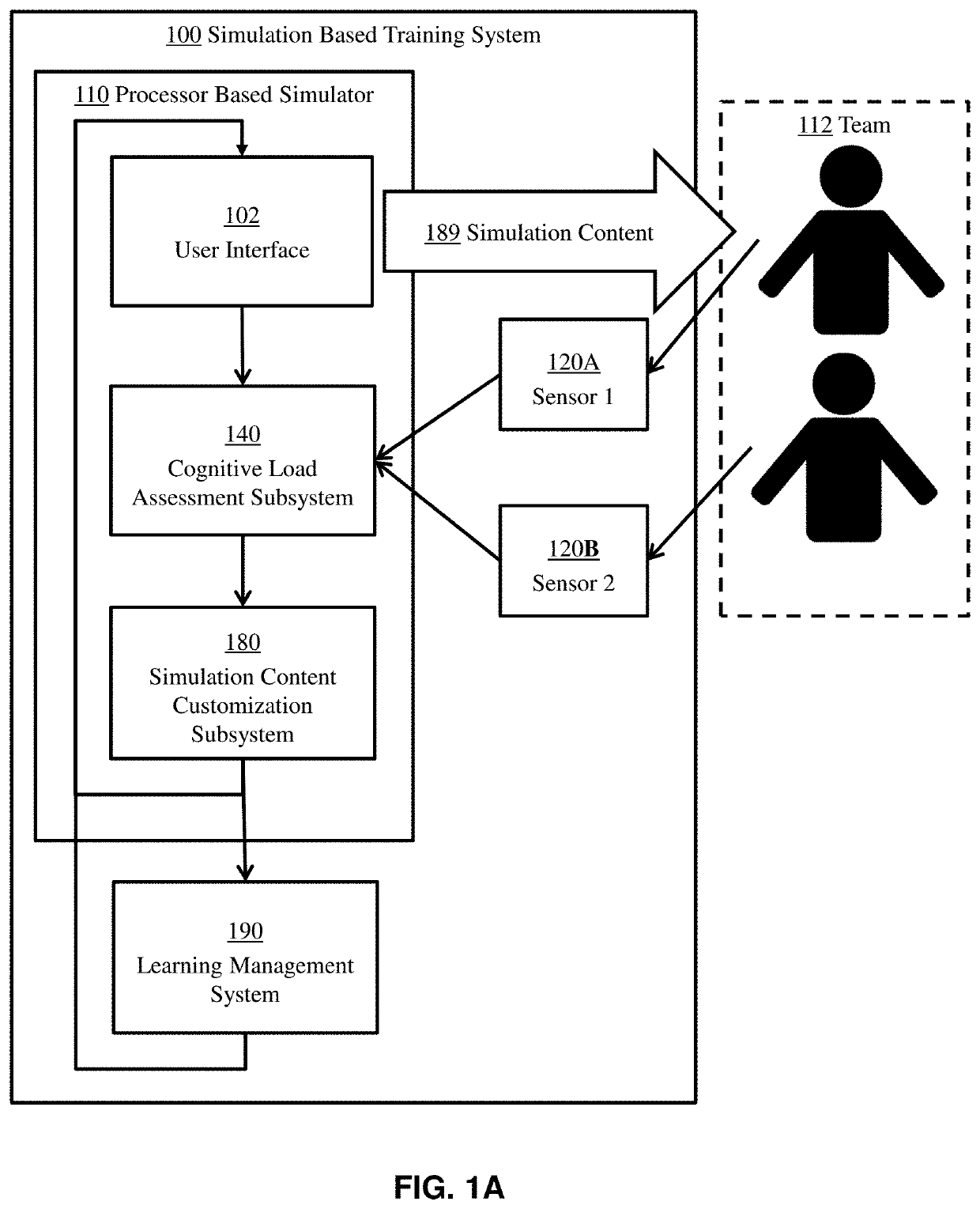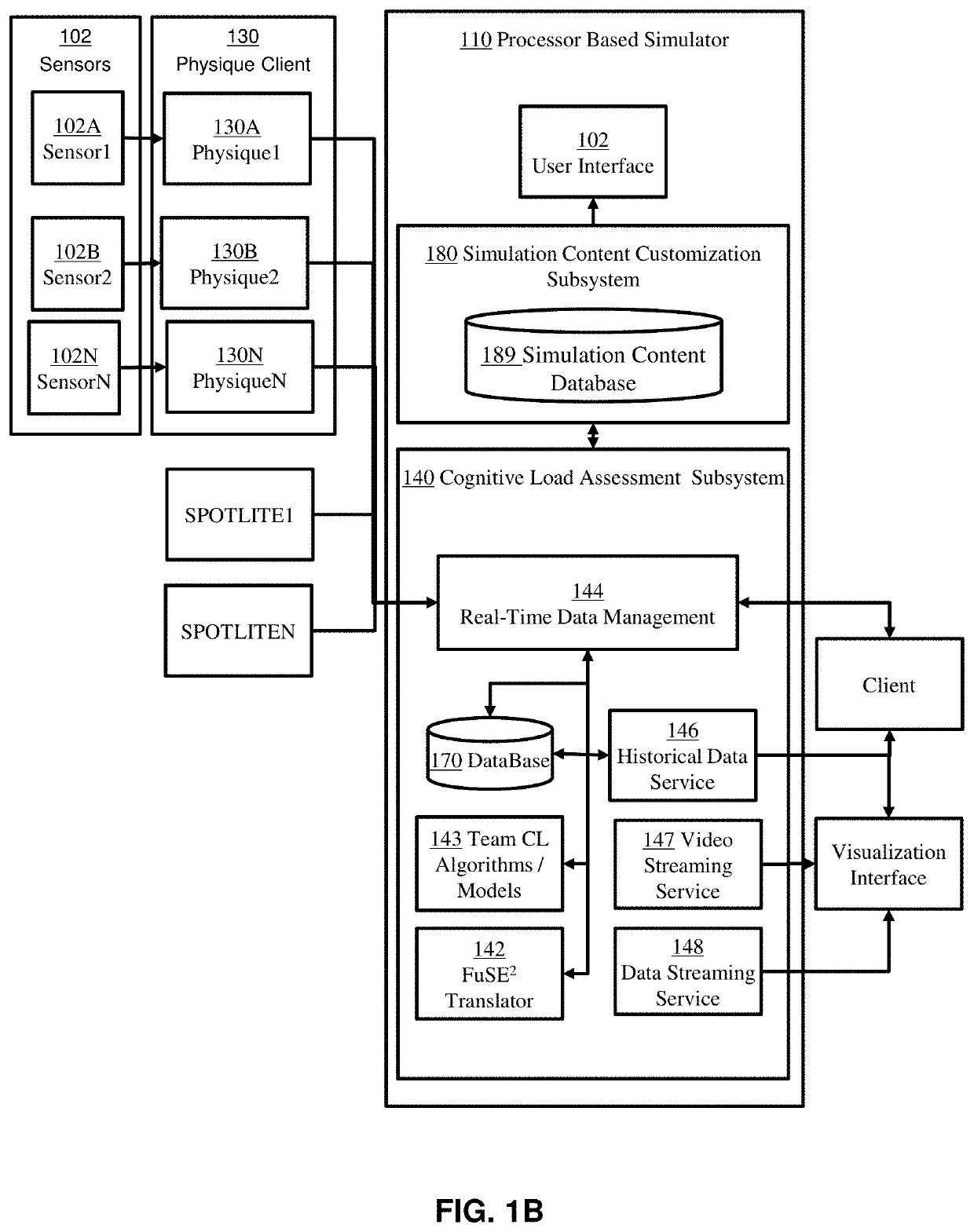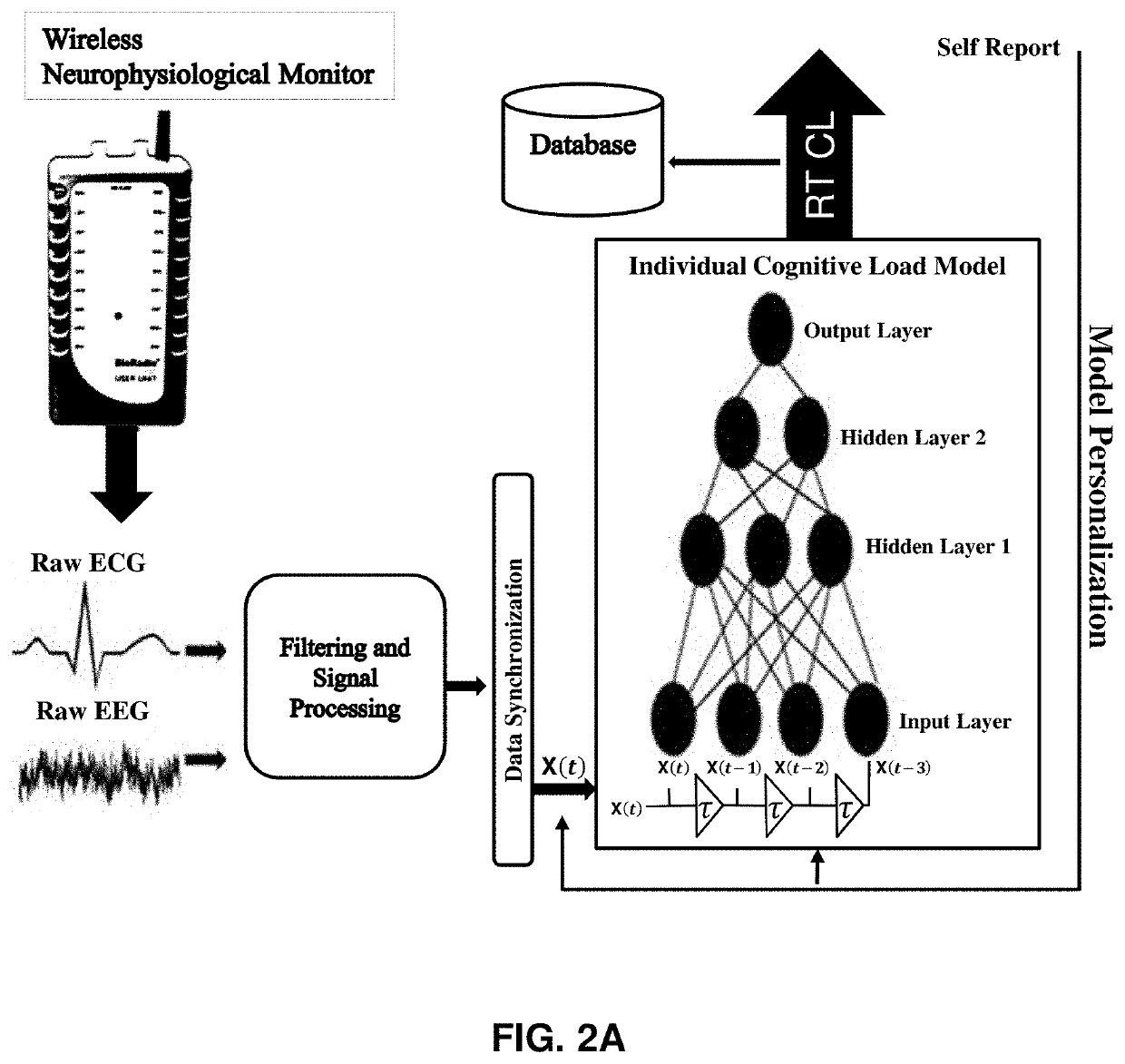Simulation based training system for measurement of team cognitive load to automatically customize simulation content
- Summary
- Abstract
- Description
- Claims
- Application Information
AI Technical Summary
Benefits of technology
Problems solved by technology
Method used
Image
Examples
Embodiment Construction
[0033]Cognitive load assessment tools and simulation based training systems for measuring team cognitive load to automatically customize simulation content will now be described in detail with reference to the accompanying drawings. It will be appreciated that, while the following description focuses on systems and methods that can be used with a computer based simulator for surgical training, some embodiments of the systems and methods disclosed herein may have wider applicability. For example only and not for limitation, some embodiments of the cognitive load assessment tools described herein may be readily employed with health monitoring, individual and team workload monitoring outside of simulators and real-time individual and team training. Notwithstanding the specific example embodiments set forth and claimed below, all such variations and modifications that would be envisioned by one of ordinary skill in the art are intended to fall within the scope of this disclosure.
[0034]F...
PUM
 Login to View More
Login to View More Abstract
Description
Claims
Application Information
 Login to View More
Login to View More - R&D
- Intellectual Property
- Life Sciences
- Materials
- Tech Scout
- Unparalleled Data Quality
- Higher Quality Content
- 60% Fewer Hallucinations
Browse by: Latest US Patents, China's latest patents, Technical Efficacy Thesaurus, Application Domain, Technology Topic, Popular Technical Reports.
© 2025 PatSnap. All rights reserved.Legal|Privacy policy|Modern Slavery Act Transparency Statement|Sitemap|About US| Contact US: help@patsnap.com



